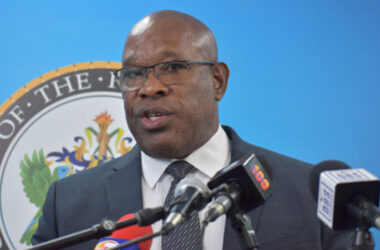ALTHOUGH agreeing that generally the past elections were free and fair, the Organization of American States (OAS) Elections Observation Mission has released several recommendations and findings it believes if implemented will augur well for Saint Lucia’s democracy.
One such recommendation has to do with Saint Lucia’s electoral boundaries. Quoting Schedule 2 of the Saint Lucia Constitution which states that, as far as practicable, all constituencies should contain as near as possible an equal number of inhabitants, the Mission noted that last time the boundaries were effectively redrawn was in 2001.
The Mission reiterated the position it had in 2011 regarding the constituency boundaries stating “there is a clear need for a redefinition of constituency boundaries to comply with the prevailing legislation and ensure a more equitable distribution of electors per constituency.”
According to the Mission, Section 58 of the Constitution mandates that the Boundaries Commission must review the number and boundaries of the constituencies and submit a report to the Governor General at intervals of not less than three nor more than seven years.
“The Mission notes that the While the Boundaries Commission unanimously recommended the creation of four new constituencies in 2014, and these changes were approved by the parliament, they have not been implemented pending the resolution of an injunction against the realignment filed in the courts.
“Over the last 20 years, the population of Saint Lucia has grown and internal migration has created an imbalance in the distribution of electors across the country. While the two largest constituencies, Gros Islet and Castries South East, comprise 23,431 and 14,858 enrolled electors, respectively, the two smallest, Vieux Fort North and Dennery South, comprise 6,883 and 5,266 electors.,” noted the Mission.
With regards to the electoral registries, the Mission reviewed Section 17 of the Elections Act which makes provision for continuous registration, with the 1979 Register of Electors being the base list to which new applicants have been added. According to the information provided to the Mission, the Voters’ List used in the 2021 General Elections contained 174,270 names, a number that is considerably high in relation to the estimated population of Saint Lucia (184,000).
“The Mission noted that, although the law mandates a periodic update of the register, no effective procedure has been established to achieve this. Sections 14 and 42 of the Elections Act and Regulations, respectively, require the Chief Elections Officer to remove from the Voters’ List electors identified and confirmed as dead. However, officials from the Electoral Department advised that there are no arrangements in place to collect this information from the Civil Status Section. Instead, the Electoral Department relies on information reported by funeral homes,” noted the Mission in its Findings and Recommendations released, earlier this week.
“Section 14 (b) of the Elections Act also gives the Chief Elections Officer the authority to delete from the Voters’ List those electors who have been absent from Saint Lucia for a continuous period of five or more years. The Mission was informed, however, that there are currently no mechanisms to give effect to this section as the Electoral Department does not receive information in this regard from the Immigration Department or from any other public institution,” noted the Mission.
In order to ensure an accurate Voters’ List, the Mission recommended, among other things, an amendment to the Elections Act to provide for the conduct of a full house-to-house enumeration exercise to replace the Voters’ List in existence and thereafter allow for periodic reverification of the List. Further, amending electors’ Registration regulations and deceased elector confirmation procedures to ensure their identification and removal from the list.
The Mission also recommended that all polling stations receive and post clear signage indicating their number and alphabetical split, as well as information regarding voting procedures, to ensure that voters are properly guided when accessing the polls.
Regarding political financing the Mission noted that Saint Lucia does not have any legal norms exclusively dedicated to the regulation of political financing, nor do political parties receive any form of direct or indirect public funding.
“There are no caps on contributions from private sources, including those from anonymous donors and foreign entities. Political parties are not required to report to any oversight agency on the use of funds and there is little to no information available to the public on party finances. In the absence of public funding or norms to promote equal participation in the electoral process, new or emerging parties face challenges to finance their campaigns for office or promote their platforms through traditional media outlets, thus further tilting the balance in favour of established parties.,” noted the Mission, recommending the establishment of direct or indirect public financing for political parties and campaigns, including state subsidies for media access.
The Mission also recommended establishing limits on private donations and in-kind contributions from individuals, businesses, and the media, and prohibiting anonymous donations and contributions from foreign sources, among other things.













